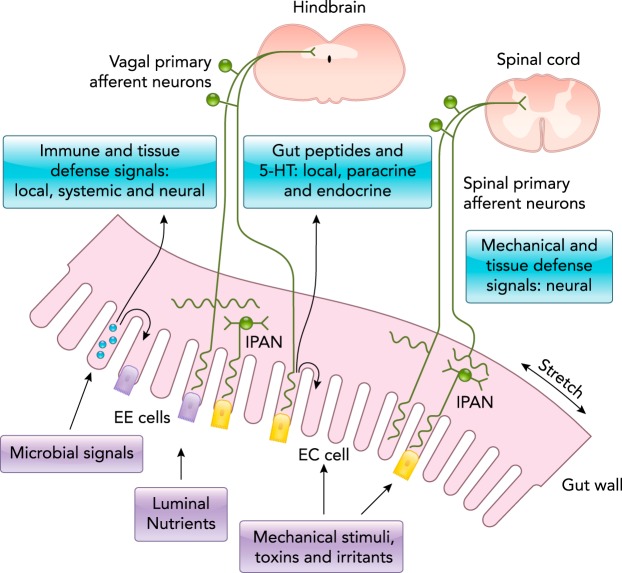FIGURE 1.
Encoding sensory signals in the gut
Gut signals are carried by vagal and spinal primary afferent neurons projecting into the hindbrain and spinal cord, respectively. Mechanical stimuli (stretch, pressure, distortion) can activate spinal, vagal, and intrinsic primary afferent neurons (IPANs) directly, without intermediary enteroendocrine (EE) or enterochromaffin (EC) cells. Although no synaptic connections have been found between IPANs and extrinsic afferents, the latter form networks around myenteric ganglia neurons that receive synaptic input from IPANs. Serotonin (5-HT), peptides, cytokines, and other molecules produced by gut endocrine and immune cells in response to microbial signals, luminal nutrients, mechanical stimuli, and other factors can signal to the brain through the circulation, through EE and EC cells, and also via receptors expressed by primary vagal and spinal afferent neurons. Figure is adapted from Ref. 155, with permission.

